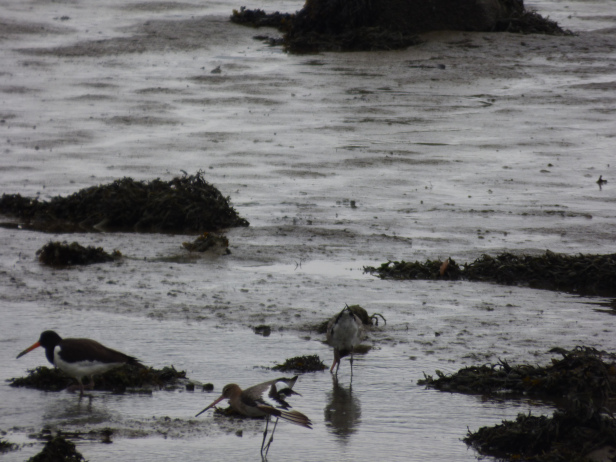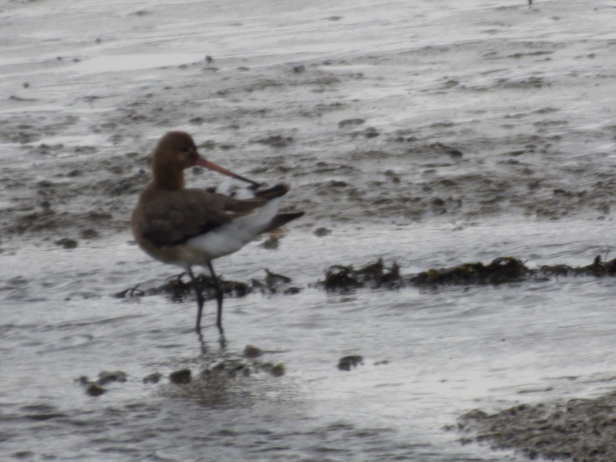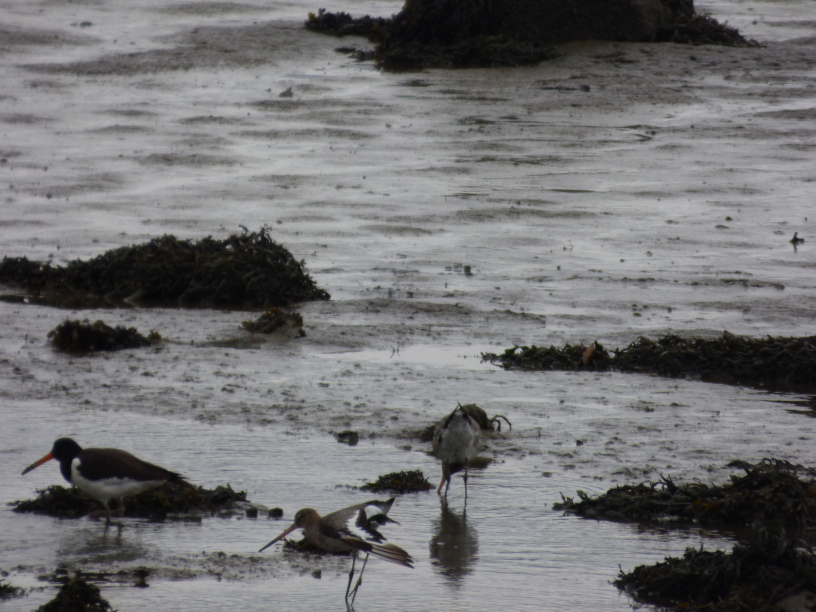A few weeks ago, after my mums hawk eyes spotted something different on the mudflat near Narrow Water Castle, Warrenpoint, we were completely delighted to spot more then twenty Black-tailed Godwits (Limosa limosa) – which translates as muddy) probing in the mud! I wasn’t absolutely sure, because sometimes they can be hard to tell apart from the Bar-tailed Godwit, but thanks to Brad Robson of RSPB, I got an id! I was utterly delighted, what looks like a desolate slobland, was covered with Oystercatchers, Redshanks, Gulls and the beautiful Godwits – every square metre of mudflat is a huge banquet table for birds.

The Black-tailed Godwit is labelled by the RSPB as a red list and vulnerable species. There are just over 50 pairs breeding in select areas of the UK and I have to say, when I was researching about the godwit, I was absolutely horrified by what I read. It is incredible to me, that these beautiful birds are being shot in mass numbers in countires such as France and Italy, whilst on their migratory passage. In early Spring, French hunters kill thousands of these graceful and stunning waders. To me, it was a privilege to see these birds and observe them. I don’t want this blog to be completely doom and gloom though, for these birds, who belong to the Sandpiper Family (Scolopacidea) have some interesting habits; they are the romantics of the wader world! Some of the Icelandic race of Godwits were satellite tagged by scientists and the tags revealed some interesting information, the females left the breeding site earlier, leaving the males with the young and at almost exactly the same breeding time the following year – the pair met again at the same place to start another family; even though they had spent the year apart. These Godwits mate for life usually but if one of the birds is late on return, then they might miss their chance to mate again with their partner! These Icelandic birds, around 44,000, winter here in the UK. They are not really true coastal waders as they prefer a variety of habitat including estuaries and wetland grasslands. Their breeding and migration are really quite complicated, so I don’t really want to go into too much detail but you can read lots more about that here.

They have a breeding plumage of a stunning orange-brown chest and in Winter they are of pale grey appearance. They have ballerina like long legs, gracefully padding through the mud and their beaks are long (the females are longer) enough to penetrate deep into the mud. Interestingly, waders all have different beak lengths in order to avoid competition, just like Darwin’s Galapagos finches whose beaks allowed them to occupy different niches (a specialised position in the eco-system), we all need to find our niche in life! These Godwits eat insects such as beetles and grasshoppers during the breeding season, along with plant-life, snails and worms.

Huge thanks to my friend Melanie, who does a fantastic job of collecting skulls, she sent me photos of her Black-tailed Godwit skull. Isn’t it beautiful! It shows perfectly that fabulous beak, its strength and capability. You might have seen Melanie on Springwatch, she hosted the skulls challenge quiz. It was my favourite. Thanks Melanie!
It was an absolute pleasure to see them and I hope you enjoyed reading a little bit about the beautiful Black-tailed Godwit!
Thank you
Dara



